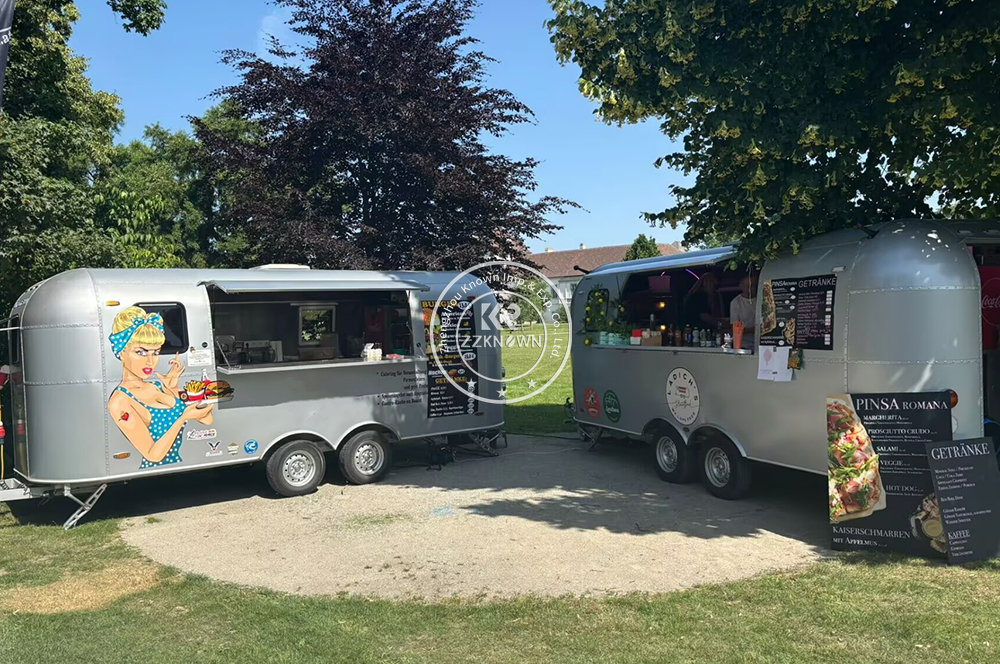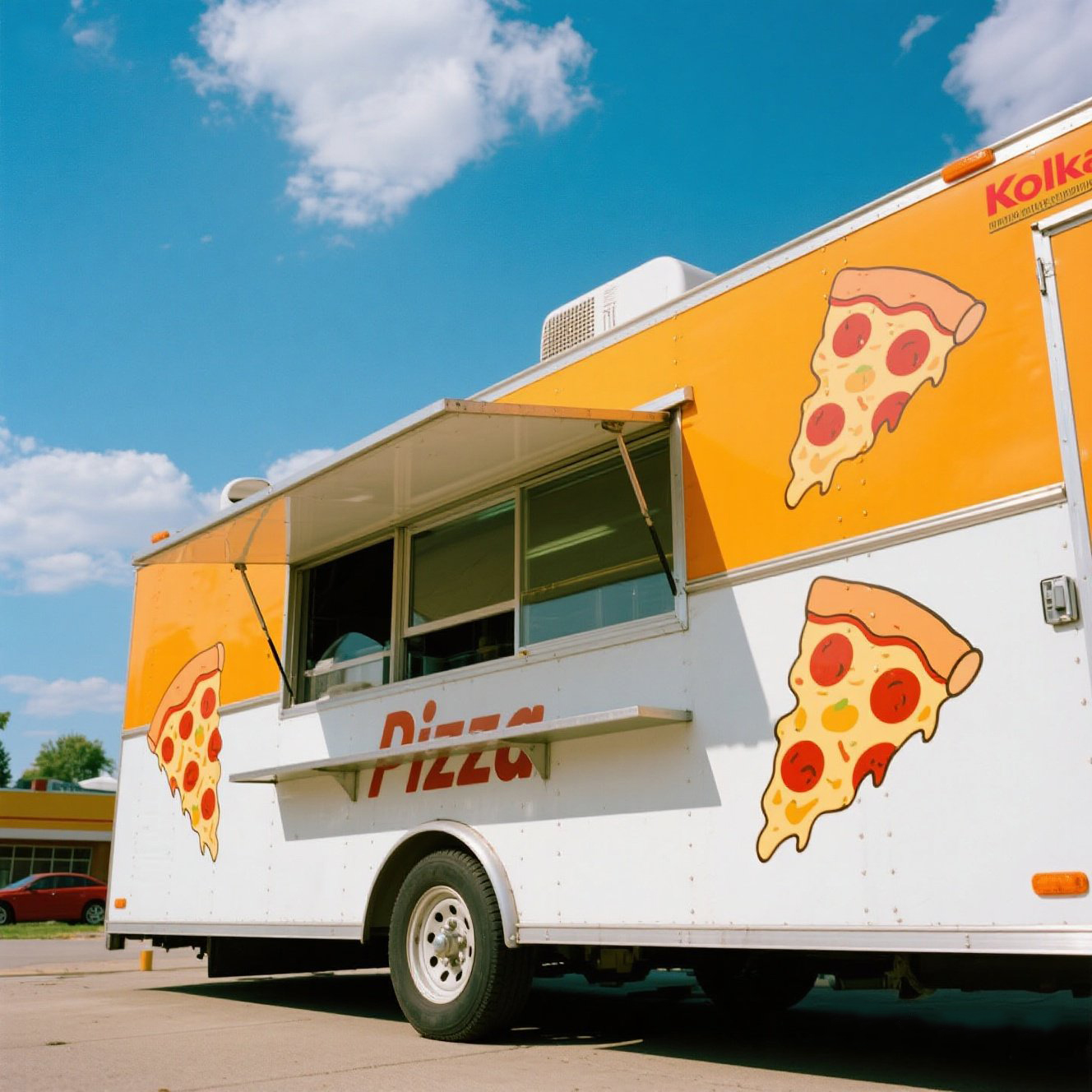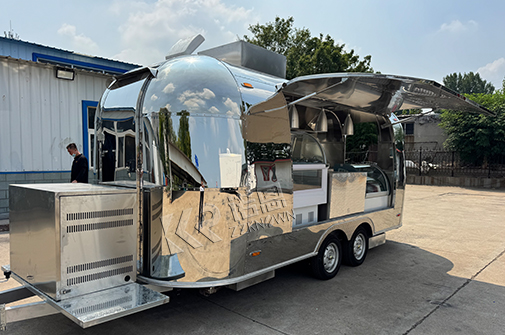Texas is more than just barbecue and brisket—it's a state with a thriving food culture that embraces diversity, creativity, and bold flavors. With massive cities like Houston, Dallas, Austin, and San Antonio leading the way, Texas has become one of the fastest-growing states for food trucks.
Why? Three reasons stand out:
Strong consumer demand for quick, affordable, and delicious meals.
Cultural diversity that makes room for everything from Tex-Mex tacos to Asian fusion and vegan BBQ.
Events and festivals that attract millions of hungry visitors each year, giving food trucks incredible visibility.
Starting a food truck in Texas can be life-changing—but only if you know how to navigate the market, legal requirements, and competition. This ultimate 2025 guide will take you step by step through everything you need to know to launch your Texas food truck successfully.
Food trucks are booming across Texas. In 2024, the mobile food business in Texas was estimated to generate over $2 billion in revenue, with consistent year-over-year growth. With the state's population climbing and its economy thriving, demand for affordable street food continues to rise.
Austin – Known as the food truck capital of Texas, with entire parks dedicated to mobile kitchens.
Houston – Offers one of the most diverse food scenes in the country, ideal for international cuisine.
Dallas – Growing demand for trendy, Instagram-worthy meals near nightlife districts.
San Antonio – Strong Tex-Mex and BBQ traditions, plus tourist-heavy locations.
Each Texas city has its own flavor profile:
Austin customers embrace vegan, vegetarian, and fusion dishes.
Dallas loves gourmet twists on classics.
Houston is famous for international cuisine—Vietnamese, Indian, and Mexican trucks thrive here.
San Antonio has deep roots in Tex-Mex and BBQ, but modern twists on tradition perform well too.
Visit local food truck parks and events to see which trucks attract the biggest lines. Take notes on their menu, prices, and customer experience. This competitor analysis ensures you don't replicate oversaturated concepts and instead find a niche.
Your unique selling proposition (USP) is your advantage. Maybe it's smoked brisket tacos with a modern flair, or a fusion menu combining Texas BBQ with Asian spices. The goal is to stand out in a crowded market.
Launching a food truck in Texas typically costs $70,000–$140,000, broken down into:
Truck purchase or lease ($50K–$100K), Purchasing a food truck from ZZKNOWN can reduce this cost to between $7,000 and $20,000.
Equipment ($10K–$25K)
Licenses and permits ($2K–$10K)
Initial food and supplies ($3K–$6K)
Branding/marketing ($5K+)
Funding sources include small business loans, private investors, crowdfunding, or Texas-specific small business grants.
Set SMART goals (Specific, Measurable, Achievable, Relevant, Time-bound). Example: Break even within 9 months, book at least 2 catering events per month in year one, and expand into a second truck by year three.

Running a food truck in Texas requires navigating state, county, and city regulations. While the Texas Department of State Health Services (DSHS) sets the framework, local jurisdictions often add their own requirements.
Most food trucks in Texas require a Texas Food Establishment Permit issued by DSHS or the local health authority. This permit ensures your truck complies with sanitation, food handling, and preparation standards.
Each major Texas city enforces its own food truck laws:
Austin – Requires a Mobile Food Vendor Permit and regular inspections. Commissary kitchen usage is mandatory.
Houston – Trucks must operate within designated mobile vending zones and cannot park near schools or residential neighborhoods without permission.
Dallas – Vendors need a Mobile Food Vendor Unit Permit and must pass inspections before operating.
San Antonio – Requires a Food Truck Permit and proof of commissary use; also has specific fire safety rules for propane.
Texas food trucks are generally required to use an approved commissary kitchen for food storage, preparation, and cleaning. Commissaries serve as the “home base” for your mobile operation.
If your truck uses propane, deep fryers, or grills, you must pass a fire inspection. This includes proper ventilation, extinguishers, and automatic suppression systems.
Your truck isn't just transportation—it's your kitchen, billboard, and storefront.
New Trucks – Cost more upfront but allow full customization to your menu.
Used Trucks – Affordable but may require costly repairs and upgrades to meet Texas standards.
Commercial grill, smoker, or fryer (depending on your cuisine)
Refrigeration and freezer units (critical in the Texas heat)
Prep counters and multiple sinks (hot and cold water required)
Ventilation hoods and fire suppression systems
POS system (cashless payments are popular in cities like Austin and Dallas)
Texans love bold, hearty, and flavorful meals. Successful concepts often include:
BBQ on the go – Brisket sandwiches, smoked ribs, pulled pork tacos.
Tex-Mex fusion – Breakfast tacos, quesadillas, and nachos with a creative twist.
International cuisine – Vietnamese banh mi, Indian curries, and Mediterranean wraps.
Vegan BBQ – A growing trend in Austin and Dallas, appealing to health-conscious customers.
Dessert trucks – Funnel cakes, churros, and ice cream are crowd-pleasers at festivals.
Keep your menu simple but unique. Choose 5–7 signature items, priced strategically to balance quality with profit. Sourcing local ingredients not only boosts flavor but also resonates with Texas customers who value homegrown products.
Texas has designated food truck parks, especially in Austin and Houston, where multiple vendors gather. These locations provide foot traffic and shared marketing opportunities.
From the State Fair of Texas in Dallas to SXSW in Austin, large events draw massive crowds. Sports games, rodeos, and county fairs also offer prime vending opportunities.
Trucks thrive near college campuses like UT Austin, Texas A&M, and Rice University. Nightlife areas such as Austin's Sixth Street or Dallas' Deep Ellum also generate strong late-night sales.
Your truck should reflect your brand personality. A bold, eye-catching design with Texas themes—like western typography, cowboy imagery, or vibrant murals—helps you stand out.
Texas foodies are active on Instagram, TikTok, and Facebook groups. Post your daily location, share behind-the-scenes videos, and encourage customers to tag your truck.
Corporate catering, weddings, and private parties provide reliable revenue streams. Many Texas companies hire food trucks for employee appreciation days or special events.
Food trucks usually operate with 2–4 staff members: a cook, cashier, and sometimes an assistant. In Texas, minimum wage follows federal standards, but pay may need to be higher to compete in major cities.
Quick service is essential. Train staff to handle rushes at festivals and lunch hours efficiently. Friendly, welcoming service encourages repeat business—something especially important in close-knit Texas communities.
Cloud-based POS systems like Square or Toast help track sales and manage inventory. This data can reveal your best-selling items and peak sales times.
Food sales in Texas are subject to state sales tax (6.25%), with some local jurisdictions adding up to 2% more. Keep accurate records for quarterly tax reporting.
Once established, consider:
Adding a second truck
Opening a small restaurant or ghost kitchen
Expanding into wholesale (e.g., selling sauces or packaged items)
With hundreds of trucks operating in Austin and Houston, competition is fierce. A strong USP and effective marketing are critical.
Texas summers can be brutal. Ensure proper refrigeration and consider adjusting menus seasonally. Cold drinks and lighter meals sell better in summer, while comfort foods perform in winter.
Rising costs of meat and produce impact profits. Building strong supplier relationships and offering seasonal specials can help manage expenses.
Chi'Lantro BBQ (Austin) – Began as a Korean-Mexican fusion truck, gained a cult following, and later expanded into multiple restaurants.
Coreanos (Houston) – Blends Korean flavors with Mexican street food, proving fusion concepts resonate in diverse markets.
The Box Street Social (San Antonio) – Started with a truck and transitioned into a popular restaurant thanks to consistent branding and quality.
The outlook is strong. With cities continuing to support mobile vendors and events booming statewide, food trucks will remain a major part of Texas dining. Trends for 2025 include:
Plant-based BBQ options
Tech-driven ordering (QR codes and mobile apps)
Sustainable packaging and zero-waste operations
1. How much does it cost to start a food truck in Texas?
Startup costs usually range between $70,000–$140,000, depending on the truck size and equipment.
2. Do I need a commissary kitchen in Texas?
Yes. Most counties require food trucks to use a licensed commissary for prep, storage, and cleaning.
3. Can I park my food truck anywhere in Texas?
No. Parking rules vary by city. In Austin and Houston, designated zones and permits are required.
4. How long does it take to open a food truck in Texas?
Typically 6–12 months, including business planning, permitting, and inspections.
5. What are the most profitable food truck items in Texas?
BBQ, Tex-Mex, fusion dishes, and desserts like churros or ice cream tend to sell best.
6. Can food trucks sell alcohol in Texas?
Yes, but only with a Texas Alcoholic Beverage Commission (TABC) permit, usually limited to events or private catering.
Starting a food truck in Texas offers incredible opportunities. With its booming economy, diverse food culture, and thriving event scene, Texas is one of the best states to launch your mobile food business.
By understanding local regulations, investing in a strong brand, and creating a menu that balances Texas tradition with innovation, you can build a loyal customer base and scale your operations. Whether you're dreaming of BBQ tacos in Austin, fusion bowls in Houston, or Tex-Mex treats at the State Fair, Texas has the customers—and the appetite—waiting for you.




